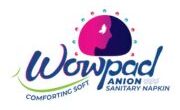Starting a sanitary napkin business in India is a lucrative and socially impactful venture. With increasing awareness of menstrual hygiene and government initiatives promoting menstrual health, the demand for sanitary pads is on the rise. If you’re considering entering this industry, this guide will walk you through each step of the process, from market research to production and distribution.
Why Start a Sanitary Napkin Business in India?
- High Demand: The Indian market for sanitary napkins is growing rapidly due to increased awareness and affordability.
- Government Support: Several government initiatives promote menstrual hygiene and support small-scale sanitary napkin businesses.
- Social Impact: Providing affordable sanitary pads contributes to better menstrual health and hygiene for women.
- Profitability: With strategic planning, this business can be both profitable and sustainable.
Understanding the Market and Potential
Before diving into the specifics, it’s crucial to understand the sanitary napkin market in India:
- Market Size and Growth: The Indian sanitary napkin market is vast and growing rapidly. Factors like increasing disposable income, government initiatives promoting menstrual hygiene, and growing awareness contribute to this growth.
- Target Audience: Identify your target audience. Are you focusing on urban or rural markets? What are the specific needs and preferences of your target demographic?
- Competition: Analyze the existing competition. Identify key players, their market share, and their strengths and weaknesses.
- Market Trends: Stay updated on the latest market trends, such as the growing demand for organic and biodegradable sanitary napkins.
1: Conduct Market Research
Before diving into production, conduct thorough market research to understand the industry trends, competition, and customer preferences.
Key Aspects to Research:
- Target Audience: Urban vs. rural consumers, affordability, and preferences.
- Competitor Analysis: Study established brands like Whisper, Stayfree, and emerging local brands.
- Pricing Strategies: Determine the price range for different categories (budget-friendly, premium, biodegradable, etc.).
- Distribution Channels: Online sales, retail stores, medical shops, and government tenders.
2: Choose Your Business Model
Decide whether you want to manufacture sanitary pads or distribute pre-manufactured products.
Business Models:
- Manufacturing & Selling: Setting up a production unit and selling under your brand name.
- Private Labeling: Partnering with a manufacturer and selling under your brand name.
- Distribution & Retailing: Selling sanitary pads from existing manufacturers.
3: Register Your Business & Obtain Licenses
To run a legal sanitary napkin business in India, you need to register your company and obtain necessary approvals.
Business Registration Options:
- Sole Proprietorship (for small-scale business)
- Partnership Firm (if you have co-founders)
- Private Limited Company (for large-scale operations)
Required Licenses & Permits:
- GST Registration – Mandatory for tax compliance.
- BIS Certification (Bureau of Indian Standards) – Ensures product quality.
- FSSAI License (if using herbal or biodegradable materials).
- MSME Registration – For availing government subsidies and benefits.
- Environmental Clearance (for eco-friendly pads).
4: Set Up Your Manufacturing Unit
Location & Infrastructure
- Choose a cost-effective location with easy access to raw materials and logistics.
- Ensure the facility has sanitary and safe working conditions.
Raw Materials Required:
- Absorbent Core Material: Cotton, cellulose, or gel-based absorbents.
- Non-Woven Fabric: For covering the pad.
- Adhesive Strips: To hold the pad in place.
- Packaging Material: Individual wrapping for hygiene.
Equipment Needed:
- Pulping Machine – For raw material processing.
- Napkin Forming Machine – To shape and press the pads.
- Drying & Sterilization Unit – To ensure hygiene.
- Packaging Machine – For final wrapping and branding.
5: Develop a Strong Product Line
Offer a variety of products to cater to different consumer needs.
Product Categories:
- Regular Sanitary Pads – For everyday use.
- Biodegradable Pads – Environmentally friendly option.
- Ultra-Thin Pads – For comfort and discretion.
- Maternity Pads – For postpartum care.
6: Pricing & Profit Margins
- Cost Analysis: Consider raw materials, labor, transportation, and marketing expenses.
- Competitive Pricing: Study the market and set affordable yet profitable prices.
- Bulk Discounts: Offer discounts for large orders to retailers and distributors.
7: Branding & Packaging
Branding Essentials:
- A unique and relatable brand name.
- Eye-catching packaging that highlights benefits.
- Eco-friendly and innovative design for sustainability.
8: Marketing & Distribution Strategy
Online & Offline Marketing:
- Social Media Campaigns: Leverage Instagram, Facebook, and YouTube.
- Influencer Marketing: Collaborate with menstrual health advocates.
- Government Partnerships: Supply to schools, NGOs, and government initiatives.
- Retail Partnerships: Distribute through pharmacies, supermarkets, and online platforms like Amazon and Flipkart.
9:Building a Strong Distribution Network
- Retail Partnerships: Partner with pharmacies, supermarkets, grocery stores, and other retail outlets.
- Distributors and Wholesalers: Collaborate with distributors and wholesalers to expand your reach.
- Online Sales: Establish an online presence through your website and e-commerce platforms.
- Direct Sales: Explore direct sales channels, such as community outreach programs and door-to-door sales.
- Government Supply: Try to get government tenders for supplying sanitary pads to schools and rural areas.
10: Scale & Expand Your Business
- Expand to New Markets: Enter rural areas where affordability is key.
- Introduce New Products: Develop tampons, panty liners, or reusable cloth pads.
- Seek Investors & Funding: Approach angel investors, government grants, or crowdfunding for expansion.
Conclusion
We hope this guide has been useful in helping you understand how to start a sanitary napkin business in India. With proper planning, legal compliance, and effective marketing, you can establish a successful and impactful business.
At Uniclan Hygiene, we take pride in being one of the best sanitary pad manufacturers in India. Our brand, Wowpad, offers high-quality, comfortable, and hygienic sanitary napkins designed to meet the needs of modern women. Whether you’re looking to start your own sanitary pad business or collaborate with a trusted manufacturer, Wowpad is your ideal partner for superior menstrual hygiene products.




